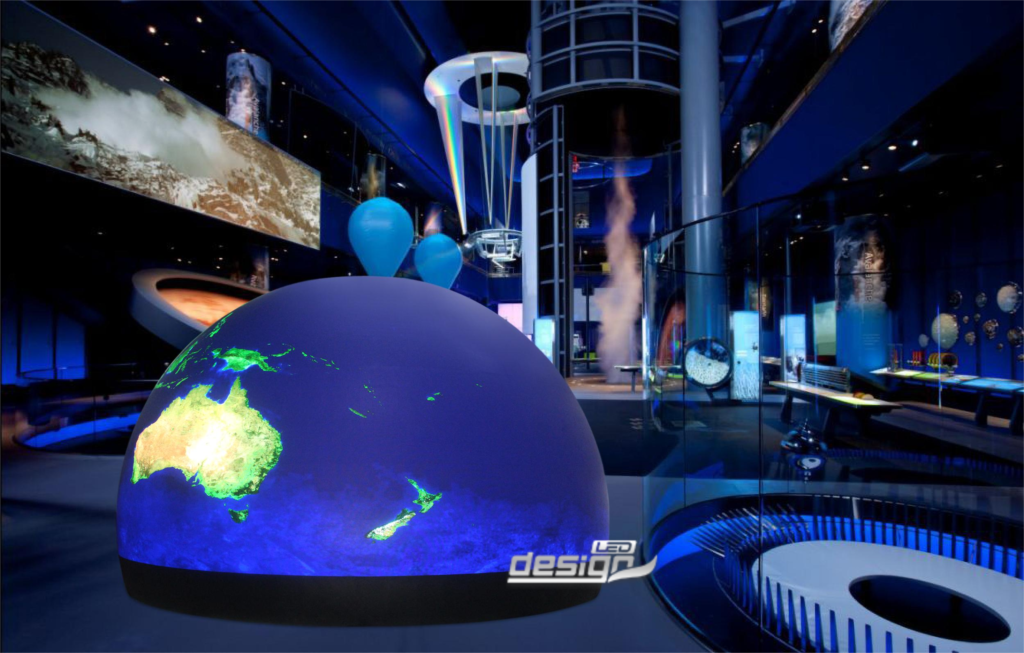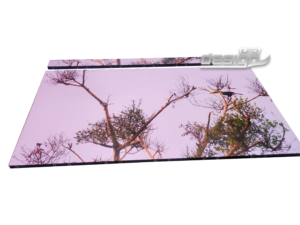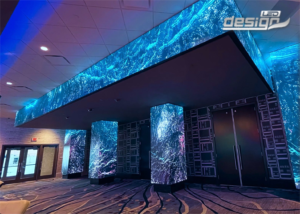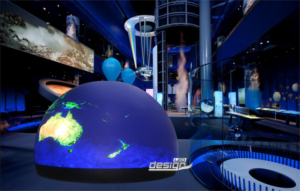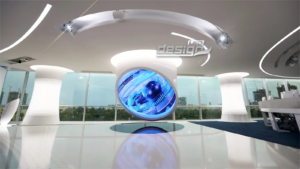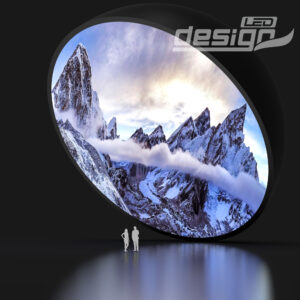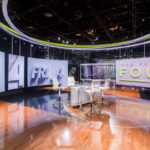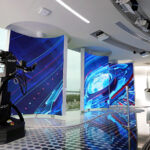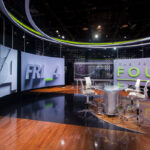The tips of led dome display.
When dealing with a large-scale LED dome display screen, there are several tips to consider for optimal performance, maintenance, and user satisfaction. Here are some key tips:
Quality of LEDs:
Invest in high-quality LED modules. The quality of the LEDs directly impacts the clarity and brightness of the visuals. Choose LEDs that offer a good balance of color accuracy and longevity.
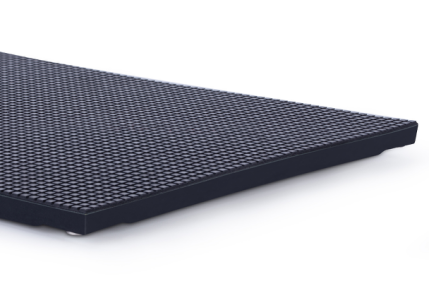
Resolution and Pixel Pitch:
Consider the resolution of the LED dome display screen. Higher resolution and a smaller pixel pitch contribute to sharper images.
Brightness and Contrast:
Ensure that the LED dome displa has sufficient brightness for the intended environment. High contrast ratios enhance the visibility of details in dark scenes. Adjust the brightness and contrast settings according to the specific content being displayed.
Color Calibration:
Regularly calibrate the color settings to maintain color accuracy.
Maintenance and Cleaning:
Establish a routine maintenance schedule. Dust and dirt can accumulate on the LED panels, affecting image quality. Follow the manufacturer’s guidelines for cleaning and maintenance to ensure optimal performance.
LED panels generate heat, so it’s essential to have effective cooling and ventilation systems. Adequate airflow helps prevent overheating, ensuring the longevity of the LEDs. Monitor temperature levels and address any issues promptly.
Optimize content for the dome format. Consider the unique geometry of the dome when creating or selecting content. Some content may need adjustments to avoid distortion when projected onto a curved surface.
Ensure seamless integration with other systems. Whether it’s audio, projection, or interactive components, a well-integrated system provides a cohesive and immersive experience for users.
Implement backup systems and redundancy where possible. This minimizes downtime in the event of technical issues. Redundant power supplies, backup projectors, and data storage can be critical for continuous operation.
Provide comprehensive training for operators and content creators. Understanding the capabilities and limitations of the LED dome system enables users to maximize its potential and troubleshoot common issues.
Implement security measures to protect the system from unauthorized access and potential cyber threats. Regularly update software and firmware to address security vulnerabilities.
Opt for energy-efficient LED panels and components. This not only reduces operational costs but also contributes to sustainability efforts.
User Feedback and Adaptation:
Solicit feedback from users and regularly assess their experiences. Use this feedback to make necessary adjustments to the system, whether it’s related to content preferences, usability, or technical performance.
By incorporating these tips, you can ensure that your LED dome display screen operates effectively, delivering a seamless and immersive experience for users while maximizing the lifespan of the equipment.
What are the tips of led dome structure?
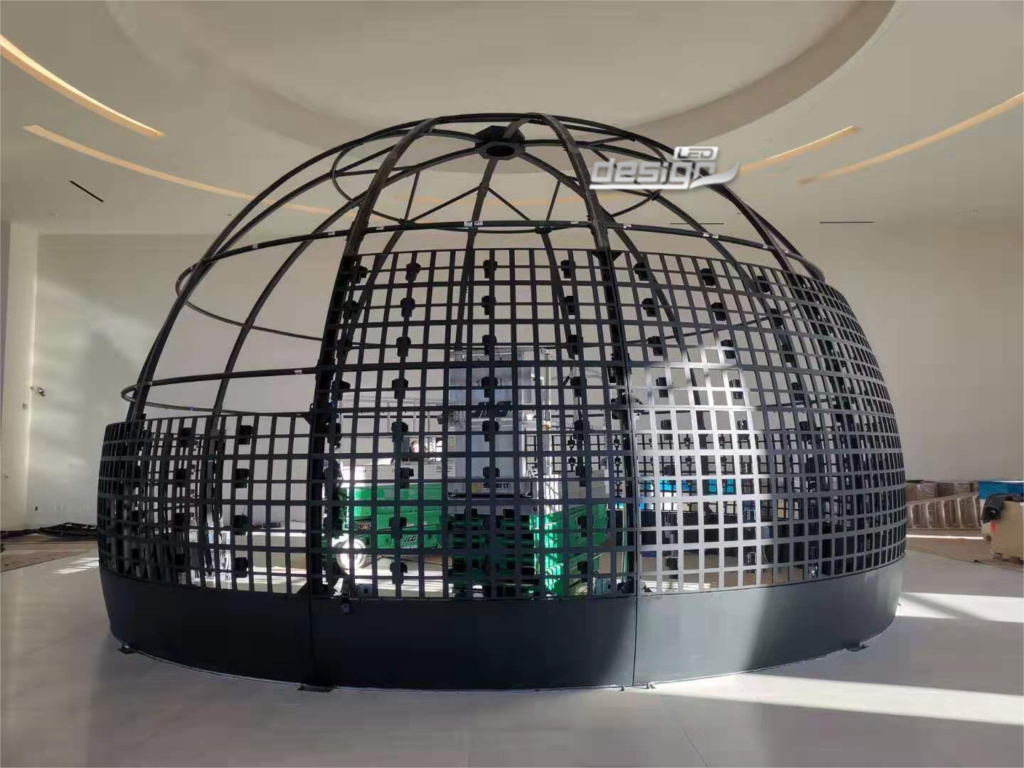
Designing and constructing an LED dome structure involves careful planning and consideration of various factors to ensure optimal functionality, safety, and aesthetics. Here are some tips for LED dome structure design:
Structural Integrity:
.Engage with structural engineers to ensure the dome can withstand various conditions.
Choose materials that are durable, weather-resistant, and suitable for the local climate.
Ensure that the dome’s curvature and geometry are carefully calculated to match the specifications of the LED panels. The curvature should be consistent to prevent distortion in the projected images.
Determine the load-bearing capacity of the dome structure, considering the weight of the LED panels, any additional equipment, and potential snow or wind loads. Reinforce the structure where necessary to meet safety standards.
Ventilation and Cooling:
Incorporate adequate ventilation and cooling systems to prevent overheating of the LED panels. Proper airflow helps maintain optimal operating temperatures and extends the lifespan of the electronic components.
Design the dome structure with accessibility in mind. Ensure that technicians can easily access the LED panels for maintenance and repairs. Include safe access points and platforms where necessary.
Provide sufficient weather protection for the LED dome structure. This may include waterproofing measures, sealing joints, and using weather-resistant materials to prevent water infiltration and damage to electronic components.
Implement effective lighting control mechanisms to manage the brightness and color consistency of the LED panels.
Power and Wiring:
Plan for the electrical requirements of the LED dome, including power distribution, wiring, and outlets. Ensure that the electrical system is designed to handle the load of the LED panels and associated equipment safely.
Follow industry standards and regulations to minimize the risk of electrical hazards.
Design the LED dome structure with modularity and scalability in mind. This allows for easier upgrades, expansions, or replacements of components as technology evolves.
Acoustic Considerations:
If the LED dome is used for audio-visual presentations, consider acoustic design principles to optimize sound quality. Acoustic treatments and speaker placement should be integrated into the design to create an immersive audio experience.
Integrate the LED dome structure harmoniously with its surroundings.
Compliance with Regulations:
Ensure that the LED dome structure complies with local building codes, safety regulations, and any relevant standards.
By addressing these considerations, you can contribute to the success of your LED dome structure project, creating a visually stunning and functional space for a wide range of applications. Collaboration with experienced architects, engineers, and contractors is crucial to achieving a successful outcome.
